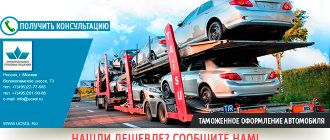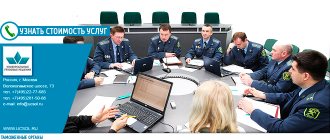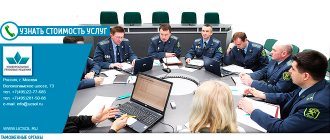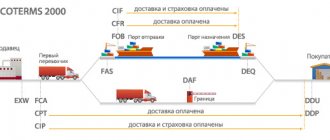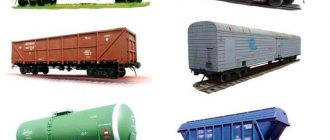Our company “Universal Cargo Solutions” provides services for customs clearance of animals at customs houses and customs posts of the Russian Federation.
Features of customs clearance of live animals - during customs clearance, all types of animals are subject to mandatory veterinary control. Veterinary services monitor this quite strictly. The goal is to protect the health of citizens and the environment from the penetration of pathogens of dangerous diseases. The procedure for protecting the population and territory of the country from the introduction of infectious diseases of living animals is regulated by the Federal Law “On Veterinary Medicine”. According to the law, live healthy animals, as well as products of animal origin obtained from healthy animals, are allowed to be imported into and exported from Russia.
We work with all participants in foreign economic activity (FEA):
- Individuals
- Legal entities
- Individual entrepreneurs
We carry out daily and, if necessary, around the clock operational:
- Customs clearance of animals for export when exported from the Russian Federation;
- Customs clearance of animals when importing - importing into the Russian Federation.
Important!
There should be a veterinary control post next to the customs post. In its absence, persons importing or exporting animals must send a corresponding application in advance to Rosselkhoznadzor indicating the place and date of customs clearance of animals. When submitting an application, legal entities and individual entrepreneurs must enter into an appropriate agreement with Rosselkhoznadzor.
When moving pets across the customs border, their owners - individuals must provide the veterinarian at the checkpoint with a veterinary passport of the animal with information about the vaccinations received. The document must be prepared in advance. It is issued at any veterinary clinic in any country.
When customs clearance of live animals sent or received by legal entities or individual entrepreneurs, at the veterinary post you will need to present another document - a veterinary certificate, drawn up on an official form according to the Rosselkhoznadzor form. When exporting animals abroad, a certificate can be ordered from a veterinarian or veterinary service. When importing animals from abroad, a certificate issued by the veterinary service of the sending country is required.
Purpose and methods of customs control
The main task of customs control over animals is to check the health status (quality) of imported and exported products of animal origin. Based on this, the customs service checks absolutely all animals imported or exported from the territory of the Russian Federation. This applies to both domestic animals (parrots, fish, dogs, cats) and animals intended for commercial use (bulls, goats, sheep, cows - for farms; elephants, lions, tigers - for circuses, animal theaters and zoos).
The main method is to conduct veterinary studies or tests. Animal vaccinations are checked and certificates provided by the competent authority of the sending country are examined. If necessary, additional analyzes of the products or the animals themselves are carried out. Based on the information received, the issue of allowing or banning a particular animal from entering the country is decided.
Transportation of slaughter animals
Delivery of animals and transportation of slaughter animals is carried out by rail, road and water transport at high speed and compliance with all precautions to protect live cargo from diseases and infections. For transportation, it is necessary to prepare an accompanying document - a veterinary certificate with information about the route, the number of heads, the epizootic situation in the harvesting areas, as well as data on the research carried out, vaccination, and the presence of an allergic reaction. The certificate is valid for 3 days.
Transportation of slaughter animals requires compliance with established standards. They are subject to inspection by a representative of the transport veterinary and sanitary service. Cars and platforms are pre-cleaned.
Animals are often transported by road. Preparing animals for transportation and the necessary formalities are similar to the corresponding procedures for railway transport.
Features of customs clearance of animals
The procedure for importing animals into the territory of the Russian Federation is regulated by a number of acts: the Customs Code, the Law on Veterinary Medicine, decisions and recommendations of Rosselkhoznadzor, etc. The procedure itself has a number of features:
- if an animal is imported into Russia by a legal entity, then it is necessary to conclude an agreement between it and Rosselkhoznadzor;
- inspection of animals must be carried out at customs posts with an equipped veterinary control center;
- individuals importing animals must present a veterinary passport of the animal;
- legal entities are required to provide a veterinary certificate.
These are the main features; there are a number of smaller nuances that mainly relate to procedural issues. A customs broker and a transport company must know and understand such subtleties - this is their professional responsibility. The client’s job is to provide the necessary information, papers and pay bills.
When is the import of animals prohibited?
Not all pets can be imported into the Russian Federation. Thus, the procedure is prohibited if the animal is not vaccinated against plague and rabies. You should not expect that customs will cooperate if vaccination is not carried out for objective reasons. Animals belonging to endangered species cannot be imported into the territory of the Russian Federation. The following animals will not be allowed at the border:
- live fish, aquatic invertebrates and shellfish;
- wild animals;
- crustaceans.
Veterinary control
Veterinary control is a mandatory procedure when importing/exporting animals. This procedure must take place at special points on the territory of the customs post. The following categories of cargo are subject to inspection:
- animals and birds (wild, domestic), fish, insects, embryos, eggs, sperm;
- livestock products (meat, milk, honey, etc.);
- collectibles;
- raw materials of animal origin (leather, fur, down, etc.);
- feed for animals and fish;
- veterinary drugs;
- biological materials.
If veterinary control is passed successfully, then a veterinary certificate is issued, giving the right to free movement of animals (products) throughout the territory of the Russian Federation.
Transportation of birds and animals
Transportation of birds and animals (not breeding), as well as bees, involves replacing the veterinary certificate of Form N 1 with a veterinary certificate of Form N 5a.
Animals on an airplane are transported in containers or cages of sufficient size with good ventilation and secure locking. Bird cages are provided with a thick blanket that does not allow light to pass through, a bottom with an absorbent coating and sides.
Transportation of birds by rail is carried out in multi-tier cars with containers for water and drinking securely fixed to the floor, solid walls and floors that do not allow liquid to pass through. Small consignments of poultry and small animals can be transported in boxes in baggage cars.
Important! In a number of countries there is a ban on the import of certain species of animals and birds.
Required documents
Exporting or importing animals, in addition to standard documents, requires a number of additional papers. Depending on the animal, its size, value, and health status, this list may vary. We invite you to familiarize yourself with the standard list of documents required for animals to correctly cross the Russian customs border:
- international veterinary passport;
- permit issued by the Veterinary Department;
- baggage ticket;
- veterinary certificate issued in Russia (form No. 1);
- permit for non-commercial export issued by Rosselkhoznadzor (for transportation of dogs and cats, if their number exceeds 2 individuals);
- a certificate issued by the Felinological Association stating that the transported animal has no breeding value (the document is required only for cats);
- a complete list of transported farm animals (if there are more than 5 animals) indicating their names and numbers;
- inventory with the seal of a veterinary institution (required when transporting farm animals in quantities over 5 animals), etc.
These are just the basic documents that may be required when importing/exporting animals. Detailed information can be obtained from the personal manager who will deal with your project.
Transportation of pets
When transporting pets using different modes of transport, the requirements of specific carriers should be taken into account.
Transportation of animals by air
Animals transported on an airplane can be in the cabin with the owner or placed in the luggage compartment. In the first case, the airline's consent is required.
The following factors influence obtaining a permit:
- The pet must be included in the list of species eligible for air transportation of animals: cats, dogs, birds, ferrets;
- Weight and size of animals, their number;
- No antagonistic animals in the salon.
Animal transport hygiene must be strictly observed. Transportation is carried out only in a cage or durable container with a waterproof bottom with an absorbent coating. Reliable closure and ventilation are essential.
Transportation of animals by rail
- Non-commercial transportation of pets is carried out in separate compartments in the amount of no more than 2 animals. Since August 12, 2014, railway transportation of animals in reserved seat accommodation is prohibited;
- Container dimensions - up to 180 cm (in three dimensions);
- The route includes only those stations that are equipped with border veterinary posts.
Transportation of animals by road
When delivering cargo by road, you should remember that registration of transportation of certain types of animals: parrots, turtles, monkeys, pythons is practically prohibited. Transportation of animals by road requires the availability of documents similar to those required for other means of transportation.
Veterinary certificate
The key document in the system of international transportation of animals is the veterinary certificate. This document confirms that the transported animal or cargo complies with the requirements of Russian and international safety legislation.
A veterinary certificate is issued after the animal has passed veterinary control at a special point at customs. An international veterinary certificate is the basis for issuing a Russian veterinary certificate. This document should contain the following information:
- number of packages in a shipment;
- weight of the entire cargo;
- information about the shipper and consignee (their names, contact details, addresses, etc.);
- descriptions of the cargo (its characteristics and properties);
- the name of the organization that issued the certificate. You should be careful in this matter, since Russia does not recognize all organizations;
- conditions of storage and transportation of cargo.
The client can draw up this document independently, or can use the services of specialists from the transport and logistics company Major. We will take on all the hassle associated with documenting customs clearance of animals.
Transportation of farm animals
carries out international transportation of pigs, cattle, sheep and other farm animals in livestock carriers of various tonnage with the provision of forwarding services. We strictly comply with veterinary requirements when transporting animals. The transport used fully complies with the strict requirements for transportation. Livestock carriers with anti-slip floors are equipped with drinking bowls, reliable locks and a satellite tracking system. We guarantee excellent animal care, humane treatment, timely feeding and safety, and trouble-free passage through veterinary control points. Before loading animals, vehicles are thoroughly cleaned and disinfected. (cars, car bodies, etc.).
Transportation of farm animals requires the availability of accompanying documents both for them and for the feed required during transportation.
Features of transporting animals
Transportation of animals has a number of features that depend on the species of the animal and the season of transportation. Let us note several key points that must be taken into account when organizing international transport of animals:
- maintaining a comfortable regime. Air temperature, humidity, level of ventilation - all these factors are extremely important, because without them, the animal can suffer or even die;
- compliance with hygiene requirements. When transporting large animals over a long distance, it is necessary to take care of the availability of bedding, removal of waste, etc.;
- organization of drinking and feeding. Correct selection of food products and organization of correct feeding and watering times is one of the priority tasks that the cargo carrier must solve;
- error-free paperwork. This is an extremely important aspect, because the animal cannot wait at the border until the broker brings the required piece of paper or eliminates another violation. In this case, it is important to immediately fill out all the documents correctly so that the customs clearance process takes place as quickly as possible.
Special requirements for transporting animals
When planning to cross the border, you should definitely familiarize yourself with the regulations governing the import of animals of the countries you are going to visit. The rules for transporting animals across the border are strictly observed.
- When visiting EU countries, at least 3 months must pass from the birth of a pet;
- The animal can be quarantined for up to six months;
- Some states do not allow the import of fighting breed dogs;
- Individual airline and rail companies may have their own requirements regarding the type of small animal carrier;
Terms and cost of registration
Based on the specifics of the cargo, customs clearance of animals is carried out within 1 day. At the same time, the “cargo” must remain in the warehouse all this time, where the necessary conditions have been created for its comfortable stay. In parallel with customs clearance, veterinary control takes place.
The cost of customs clearance depends on the following conditions:
- the amount of customs duty, which is determined in accordance with the Commodity Nomenclature of Foreign Economic Activity;
- customs clearance fee;
- cost of temporary storage warehouse services, etc.
We offer our clients transparent prices and the shortest processing times.
Example of calculation of customs duties
| VIEW | HS CODE | DUTY | VAT | EXCISE DUTY | CUSTOMS VALUE | WEIGHT, KG) | SIZE OF CUSTOMS PAYMENTS |
| Breeding boar. Breed Large white | 0103100000 | 0% * (breeding purebred animals are not subject to customs duties) | 0% (breeding purebred animals are not taxed) | none | 1000 euros | 80 | Customs duty – 375 rubles |
* — duty rate according to the Commodity Nomenclature of Foreign Economic Activity code for January 2020.
The given results of calculating customs duties are for informational purposes only and are not final. Actual amount may vary. If you need to calculate the amount of customs duties under other customs regimes, we recommend contacting our specialists by leaving an online application on our website.
Documents and information for customs clearance of animals
- List of documents for registration of an individual at customs (View)
- List of documents for registration of a Legal entity at customs (View)
- List of documents for registration of an individual entrepreneur at customs (View)
- List of documents for customs clearance “Import” (View)
- List of documents for customs clearance “Export” (View)
Customs clearance of animals from Major
The transport and logistics company Major has been operating in the domestic and international cargo transportation market for more than 19 years. We have successful experience in transporting and customs clearance of animals from different countries of the world. At your service:
- passing certification (searching for an accredited organization, submitting an application and package of documents, etc.);
- a set of declaration measures;
- selection of the optimal customs regime;
- calculation of fees and payments;
- search for HS codes;
- drawing up a customs declaration;
- assistance in completing the customs clearance procedure, etc.
We take care of all issues related to the transportation and registration of import/export of animals across the customs border of Russia.
The transport and logistics company Major delivers from 189 countries, has 37 own offices in the country, more than 200 partnership agreements with leading transport companies and thousands of completed projects. We would like to talk about one of them in a little more detail.
How we carried an elephant, and not one, but three at once!
2021 marks the 70th anniversary of the establishment of diplomatic relations between our country and the Republic of Myanmar. The office of our company would never have known about this significant date if it were not for the gift that the Government of a distant country made - three elephants. By a strong-willed decision of domestic politicians, the animals were transferred to the ownership of the Moscow city administration, which placed the elephants under the care of “Grandfather Durov’s Corner.”
The transportation of the valuable gift was entrusted to the transport company Major. We already had experience in transporting animals from different countries of the world and gladly decided to participate in such an unusual delivery. Initially, the task, despite its scale, looked quite trivial: load the elephants into an enclosure, cages first onto a trailer, then onto a plane to Moscow, there is another trailer and transportation for permanent residence to the animal theater. Nothing unusual - everything is as always. But then it turned out that they wanted from us not just transportation, but a comprehensive organization of delivery:
- production of enclosures;
- calculation of the quantity and purchase of feed and absorbent material for bedding;
- registration of all accompanying and permitting documents;
- passing customs and veterinary control.
In addition, it turned out that domestic standards for the transportation and registration of animals do not coincide with those adopted in the Republic of Myanmar. We had to look for compromises almost at the international level. As a result, all the details were settled, and 24 hours after the animals left their usual habitat, they found themselves in the company of representatives of the Moscow theater.
Since then, the story of the three elephants has become our internal meme and another confirmation that nothing is impossible for us. Call us and we will bring you even an elephant! Even three!
Advantages of cooperation with our company
We have extensive experience delivering cats, dogs and other pets on direct passenger flights. Our company specialists:
- choose the flight that suits you;
- will solve all organizational issues;
- they will deliver the pet to the plane, put it on board, and make sure that everything is okay with it;
- at the destination airport they will make sure that the animal has been delivered and everything is fine with it, and will hand it over to the person meeting it or, by agreement with the client, will deliver it to the specified address.
Services for transporting your pets by air are provided at a high professional level. Ask our managers all questions about the organization of delivery, cost and possible timing - they will promptly provide the necessary advice.
What is required to import cats and dogs into Germany?
Animals, including domestic ones, can spread diseases such as plague, bird flu, foot and mouth disease, and so on. In order to prevent the risk of the introduction and spread of diseases that threaten epidemics for the fauna of EU countries, the import of animals and the import of goods of animal origin is subject to careful control. So the owner will have to prepare in the most serious way for the import of his pet.
The requirements for private owners and entrepreneurs are different. Commercial import of animals is not covered in this article. For non-commercial purposes, up to five animals per person are allowed.
In order to protect against rabies and its spread, sanitary standards for the import of cats, dogs and ferrets were introduced on October 1, 2004. An indispensable condition for importing from countries outside the EU zone is checking the documents of animals and their identification.
Below is a list of documents for importing these pets into Germany:
- International veterinary passport with photo and all vaccinations according to age. If all vaccinations have not been done every year, then there is the option of “losing your passport” and getting a new one.
- Chip. Every animal must have a tattoo or microchip. For animals marked starting from July 3, 2011, a microchip is required.
- Rabies vaccination given no earlier than 11 months and no later than 30 days before departure.
- Certificate for an antibody test. An antibody test is required for Ukraine (Ukraine is on the list of countries with a high level of rabies virus infection). There is only one clinic there, located in Kyiv. But in general, this test can be done in any country 30 days after the rabies vaccination. If after 3 months of tests the results are normal (the content of neutralizing antibodies must be at least 0.5 IU/ml), then you can enter Germany. Owners of animals for which a rabies titre test has not been performed may face serious trouble at the very first EU border. Forced reimbursement of the official veterinarian's expenses (otherwise the animal will not be allowed abroad) and the pet being quarantined for several months. All quarantine costs and fines for violating the rules are borne by the owner. In the most extreme cases, the killing of the animal is prescribed. For Russia, this test is optional, but keep in mind that a particular customs officer may not know such subtleties
- Certificate in form No. 1 (done 2-3 days before departure, provided that all vaccinations have been completed and recorded in the animal’s passport). Issued only by state veterinary hospitals. The certificate at the border checkpoint is exchanged for an international veterinary certificate Form No. 5a. But it is better to make this exchange in advance. This can be done free of charge at the department of state border veterinary supervision of the Rosselkhoznadzor Office for the region, where the certificate in Form No. 1 was received. At Sheremetyevo Airport (Moscow), veterinary control officials explained that the exchange is made no earlier than 24 hours before departure, and you cannot get a certificate before departure. Requirements may vary at other airports. Often it is not necessary to present the animal for inspection at the time of receiving a certificate, but at Sheremetyevo they require it.
- Completed forms on pages 5-6 of this document confirming that the animals have not been in contact with those infected with rabies since birth and are not imported for sale or change of owner.
Types of animal transportation
offers transportation of animals and birds in various ways. Types of animal transportation: air transport, railway, animal transportation by road. Cargo of any volume and category of complexity will be delivered on time. We undertake the preparation of the package of documents and compliance with the necessary formalities. Complete safety of cargo is guaranteed. The cost of transporting animals in our company is very affordable, as we work without intermediaries.
Benefits of working with us
- We work 7 days a week 365 days a year
- Highly qualified specialists with extensive experience
- We bear full responsibility for the clearance of goods at customs
- We process any goods at any customs in Russia



